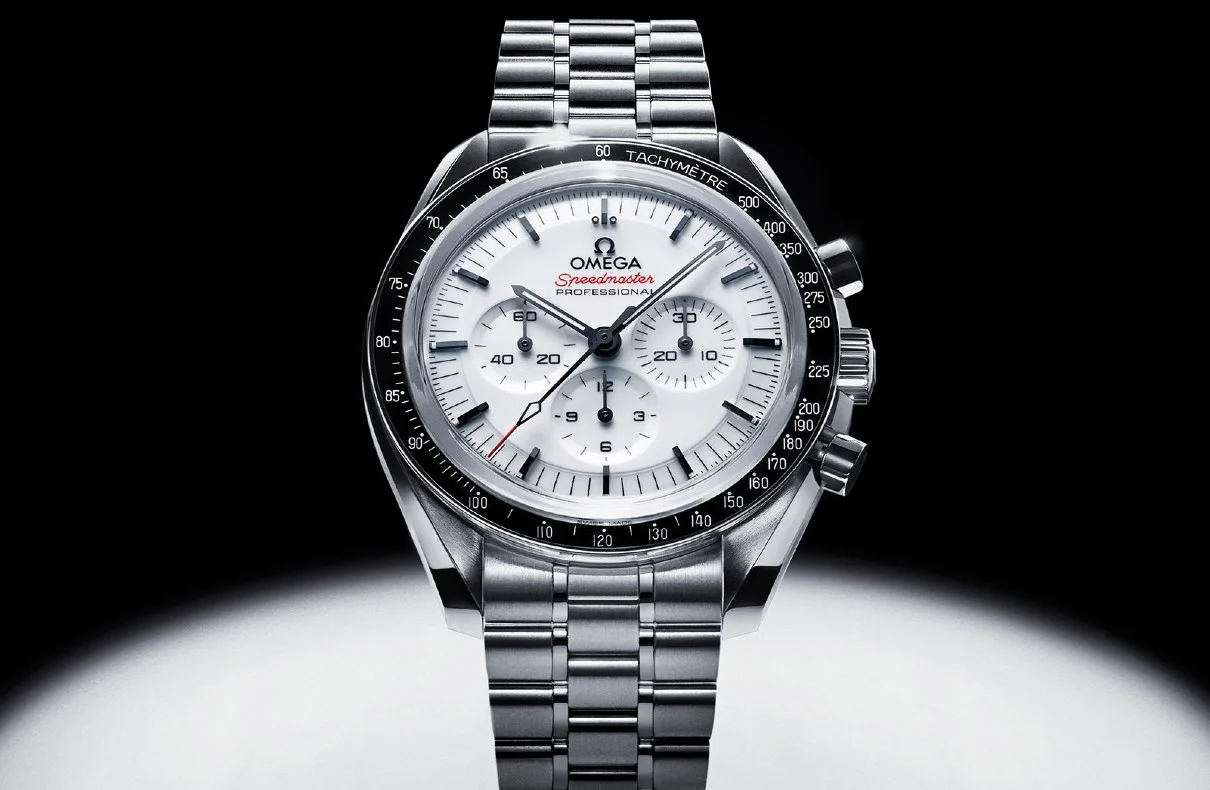Omega, the renowned Swiss watchmaker, has recently graced the horology world with their newest creation – a Speedmaster Moonwatch featuring an exceptional white lacquer dial. This latest addition to the Speedmaster collection pays homage to Omega’s rich history with space exploration.
Omega’s Speedmaster collection is recognized worldwide for its unrivaled legacy in space exploration. Since its inception in 1957, the Speedmaster has remained a trusted companion for astronauts, owing to its exceptional precision and durability. The collection gained global recognition when it became the first watch to be worn on the moon, etching its name in the annals of horological and space exploration history.
Let’s delve into the specifics of this latest marvel. The new Speedmaster Moonwatch boasts a 42mm stainless-steel case, housing the state-of-the-art Co-Axial Master Chronometer Calibre 3861 movement. This is the modern iteration of the Calibre 321 – the trusted mechanism of the astronauts during their lunar missions.
The watch is available with a classic stainless-steel bracelet. However, for those who like to mix things up, Omega also offers an upgrade to a black micro-perforated leather strap with red and white stitching or an anti-bacterial rubber strap with a moon-surface pattern on the underside.
One of the most striking features of the new Speedmaster Moonwatch is its lacquered white dial. The glossy lacquer finish is a first for the Moonwatch’s step dial, setting this timepiece apart from its predecessors. The white dial is complemented brilliantly by black detailing and applied indexes. The Speedmaster name, set in red script under the Omega logo, adds a dash of vibrancy to the overall minimalist color scheme.
The choice of a white dial is not merely aesthetic. It carries historical and functional significance. In 1969, Omega collaborated with NASA on the Alaska I prototype with the goal of designing the perfect space watch. The prototype featured a white dial, which proved to be highly effective in providing thermal reflection. The white dial, therefore, is a nod to this historical collaboration and the Speedmaster’s enduring relationship with space exploration.
The black, white, and red color scheme of the new Speedmaster Moonwatch is a tribute to Omega’s long-standing association with space exploration. The black and white colors mirror the spacesuits worn by astronauts, while the red detailing signifies the commander’s rank.
The Houston Texans Make a Triumphant Return to the Playoffs
The design inspiration also extends to another of Omega’s collaborations with NASA. The Alaska I prototype, a result of a secret project with the space agency, featured a white dial for optimal thermal reflection and a protective red case. The new Speedmaster Moonwatch, with its white dial and red Speedmaster script, subtly echoes this historical model.
The new Speedmaster Moonwatch, with its unique design and historical relevance, is priced at a minimum of $8,100. While this might seem steep to some, the watch’s rich history, coupled with its exceptional craftsmanship and innovative design, justify the price tag.
For space enthusiasts and horology aficionados alike, owning this timepiece is akin to possessing a piece of space exploration history. The new Speedmaster Moonwatch is more than just a timekeeping device; it’s a symbol of Omega’s enduring legacy in space and time.
Omega’s new Speedmaster Moonwatch with a lacquer white dial is a testament to the brand’s commitment to innovation and its deep-rooted connection to space exploration. It brings together historical significance, superior craftsmanship, and a unique design, offering watch enthusiasts a chance to own a piece of horological and space history. Whether you’re a budding space enthusiast or a seasoned horology connoisseur, this timepiece is sure to make a worthy addition to your collection.
Remember, owning an Omega Speedmaster is not just about possessing a watch. It’s about being a part of a legacy that has made its mark on the moon and continues to inspire innovations on Earth.
